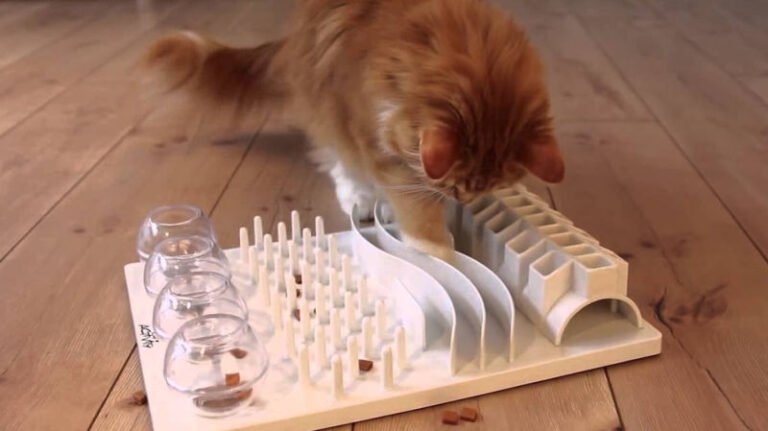The fact that many domesticated cats are kept strictly indoors, does not change the reality they are natural predators and foragers which can lead to a host of health issues both physically and psychologically. Indoor housing has been linked to a variety of health problems including urinary tract issues, obesity and diabetes as well as behavioral issues including house soiling, seeking attention and aggression.
As reported on Gizmodo by contributing editor George Dvorsky in a story titled “Cats Are Happier and Healthier When You Make Them Work for Their Food,” he reports on a new study published in the Journal of Feline Medicine and Surgery. The University of California at Berkeley research team involved with the study examined the benefits food puzzles and gadgets have on cats forced to work for their food. The puzzles are designed to tap into the feline’s predatory/foraging nature and hunting instinct. When cats forage in this manner, they become more physically active which in turn reduces their stress level. Accordingly, the benefit to the cat owner is a less demanding cat.
The researchers in this new study documented over 30 cases in which food puzzles were shown to aid a specific health or behavioral concern. Examples include an obese eight-year old domestic shorthair cat that lost 20% of its body weight within a year of utilizing a puzzle. In another case, a three-year old cat exhibiting impulse frustration based aggressive behavior stop doing so within six months of using mobile and stationary puzzles. A third case in which mobile and stationary puzzles were utilized resulted in alleviating a two-year old cat’s fear of people.
Two varieties of cat food puzzles currently exist, mobile and stationary. The mobile kinds require cats to push or roll a device like a plastic ball with holes in it with their nose. Stationary food puzzles however, require cats to navigate a board. Both puzzle types can normally be facilitated using either wet or dry food. Although there are currently a number of mobile and stationary cat food puzzles available for purchase in the market, the puzzles are easy to make at home with a pair of scissors and common household items including egg cartons, water bottles and paper bags.
The researchers point out that the process of choosing the right puzzle or puzzles is an important trial and error process for owners to take as cats have their own unique preferences relative to food puzzles. Ultimately the goal is to keep the cat engaged by furnishing several different types of puzzles. Food puzzles are healthy in multi-cat households, however, it is suggested each cat have its own toy(s). Subsequently, if you also have one or more dogs in the house, it is recommended to separate the cats and their toys from the dog(s).


